Key takeaways:
- Breaking down the wedding timeline alleviates stress and keeps events organized, allowing for a balanced mix of planned and spontaneous moments.
- A wedding directory streamlines vendor selection, fosters connections, and enhances the overall planning experience.
- Prioritizing key events and incorporating flexibility in the timeline can optimize planning and create opportunities for unexpected memories.
- Involving key stakeholders in timeline creation promotes collaboration and eases planning stress, making the experience more enjoyable.
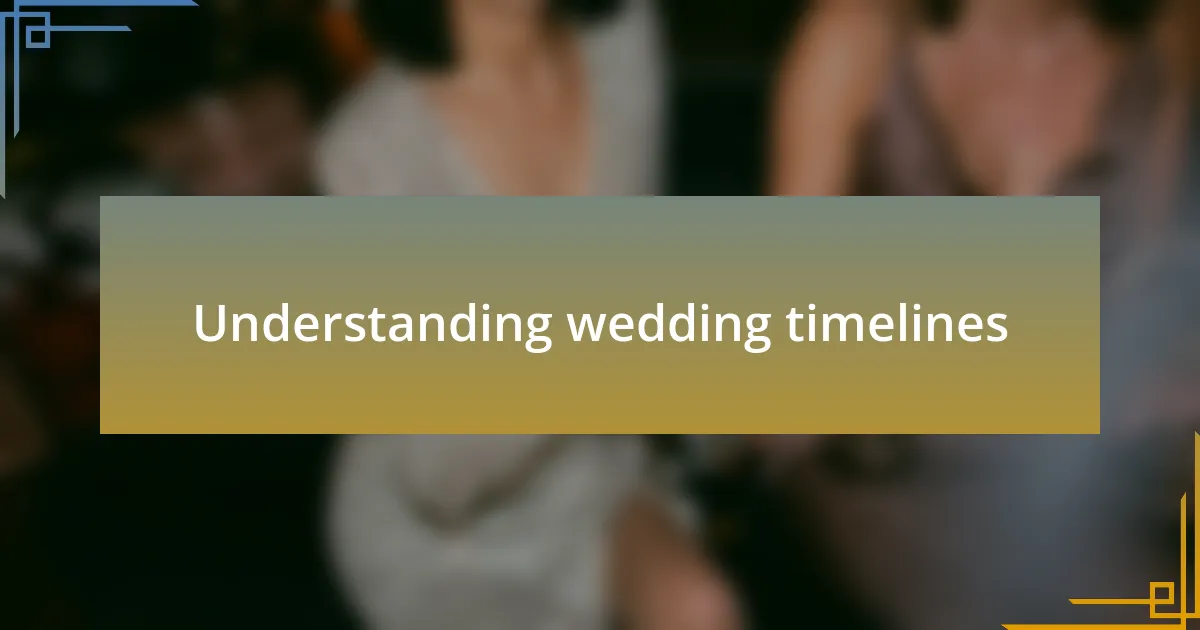
Understanding wedding timelines
Understanding wedding timelines can feel overwhelming at first, but breaking it down simplifies the process significantly. I remember sitting down with a cup of tea, excited yet anxious, as I mapped out my own timeline. It felt like putting together a puzzle; each piece, from the ceremony to the reception, had to fit perfectly to create the big picture.
As I navigated my planning, I discovered that a well-structured timeline not only keeps events on track but also alleviates stress. Have you ever been caught in the chaos of last-minute decisions? I have, and there’s a clarity that comes with knowing exactly what’s next. Each time I referred back to my timeline, a sense of calm washed over me, empowering me to fully embrace each moment without feeling rushed.
Additionally, I learned that wedding timelines are not just about logistics; they’re a reflection of your day’s unique rhythm. They can be as flexible or as detailed as you want. For instance, I opted for specific time slots for key moments, but I also allowed a little cushion time for unexpected surprises. After all, isn’t the joy of a wedding found in both the planned and the spontaneous?

Importance of a wedding directory
Having a wedding directory is invaluable in streamlining the planning process. I remember how overwhelming it was to find vendors that suited my vision. A directory provides a curated list of options, allowing you to focus on those that truly resonate with your style and budget. Isn’t it comforting to have such a resource at your fingertips?
Moreover, a wedding directory acts as a lifeline during the decision-making process. I found myself revisiting my favorite vendor listings countless times, each time sparking different ideas and inspirations. You might think about how daunting it can be to sift through countless websites and reviews—having everything in one place makes those choices feel more manageable and less stressful.
Lastly, it fosters connections that are essential for your big day. In my experience, I discovered numerous local vendors through our directory who not only offered great services but were also open to collaboration. Have you ever thought how these relationships can lead to unique touches that reflect your personality? A good wedding directory isn’t just a tool; it nurtures a community that ultimately enhances your celebration.
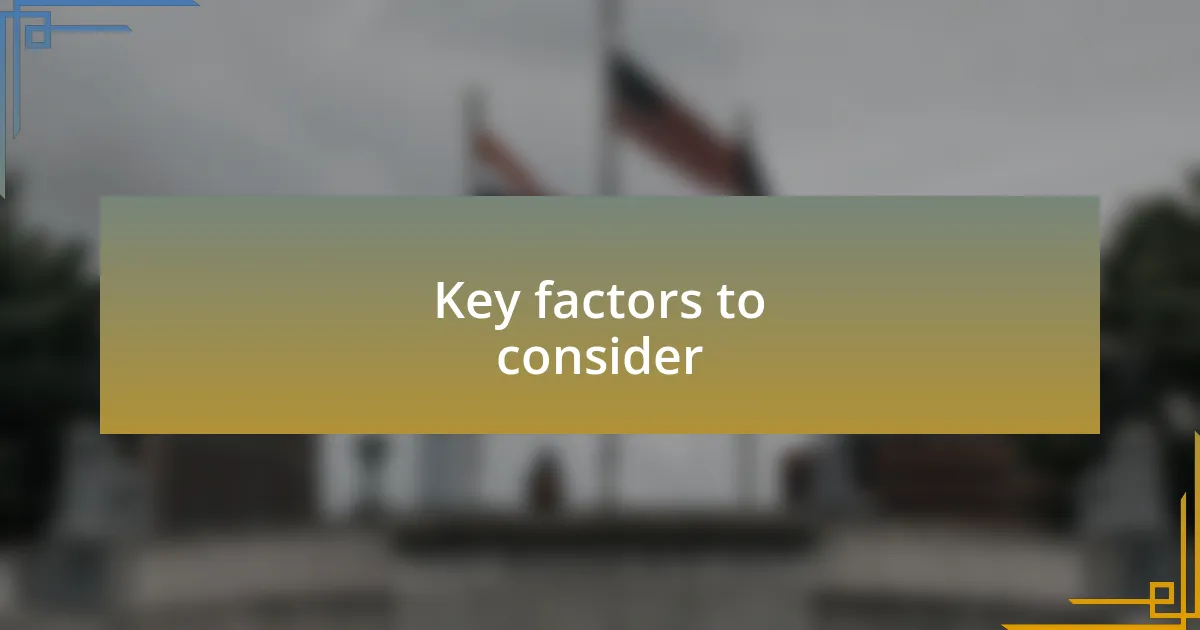
Key factors to consider
When selecting a timeline for your wedding planning, one key factor to consider is your unique vision for the day. I remember having a clear idea of the vibe I wanted, which helped me establish a timeline that matched that vision. Have you thought about how your chosen style, whether it’s classic, vintage, or modern, could influence every detail, from floral arrangements to seating charts?
Another important aspect is the availability of your preferred vendors. I experienced the frustration of falling in love with a venue only to discover it was booked on my desired date. So, my advice is to check in with your top choices early on and create a timeline that aligns with their availability. How would it feel to miss out on a vendor just because you didn’t plan accordingly?
Lastly, remember to account for significant milestones in your relationship when determining your timeline. I vividly recall incorporating our anniversary date into our planning schedule; it added a personal touch that made the process feel even more meaningful. Reflecting on your journey together can help shape the timeline, making your wedding not just an event but a celebration of your love. What little details can you integrate to honor your relationship as you create your timeline?

Gathering essential vendor information
Gathering essential vendor information is crucial to building a solid wedding timeline. For me, the first step involved reaching out directly to vendors I was interested in—photographers, florists, and caterers. I made a spreadsheet where I noted their availability, pricing, and unique offerings. Have you considered how knowing your vendor’s busy seasons might affect your wedding date?
As I connected with vendors, I realized the value of asking the right questions. I remember sitting down with my potential florist and learning about their preferred planning timeline, from initial consultations to the delivery of arrangements. It struck me how crucial that information was; once I understood their process, I was able to adjust my plans accordingly. How often do we overlook these details that can streamline our planning?
Finally, I found it helpful to note any required deposits or contracts that would influence my timeline. The need to secure vendors with early deposits taught me the importance of financial planning and commitment. I often ask myself—what if I hadn’t prepared in advance? Having this information upfront ensures that the timeline remains realistic and achievable without last-minute stress.
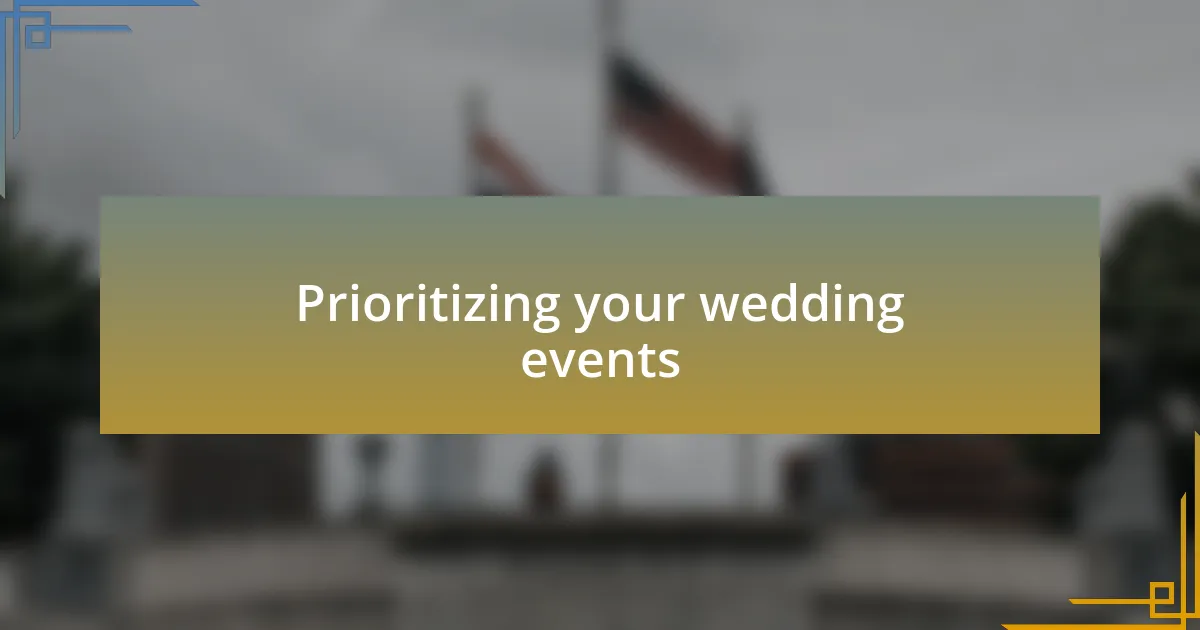
Prioritizing your wedding events
Prioritizing your wedding events can make a significant difference in how smoothly your planning unfolds. I vividly recall the moment I sat down with my partner to map out the key events. We started by identifying what truly mattered to us—like the ceremony and reception—leaving room for details like the cake cutting and first dance. Have you thought about which moments will be the most meaningful for you and your guests? That clarity helped us focus our energy and budget effectively.
As we assessed our priorities, I realized that some events could be arranged side by side without diminishing their essence. For instance, we paired the floral delivery with the cake setup, which optimized vendor arrival times. This side-by-side approach not only saved us time but also eased the stress of the day. Are you open to thinking outside the box and bundling tasks to simplify your timeline?
Sometimes, unexpected changes in priorities can provoke panic. I remember how we had to reschedule our photographer due to a conflict, and initially, it felt overwhelming. However, I learned that adapting our timeline to accommodate this change actually led us to explore other options we hadn’t considered before. Why not embrace flexibility as a part of your planning experience? Being open to change can lead to discovering hidden gems that might enhance your celebration.
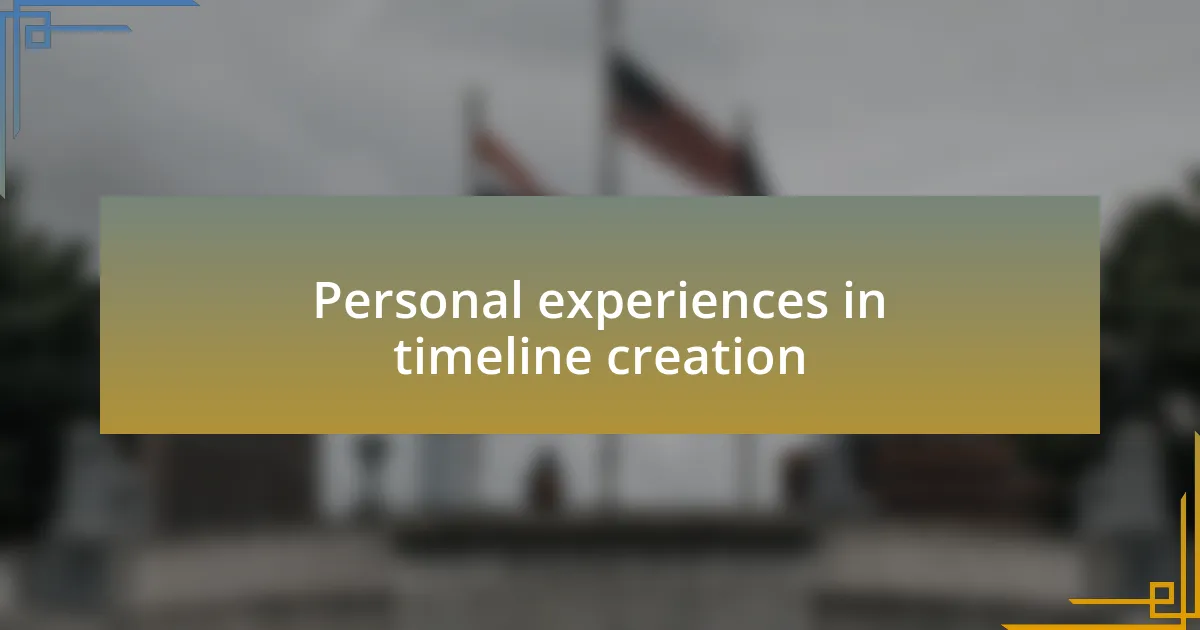
Personal experiences in timeline creation
In my journey of timeline creation, I found that visualizing the day helped tremendously. I remember sketching out the flow of events on paper, which allowed me to see how each activity interconnected. Have you ever tried mapping your day visually? It made me realize how certain moments, like the toasts and cake cutting, could really enhance the overall atmosphere when timed right.
I also discovered the importance of including buffer time in our schedule. During one planning session, I felt overwhelmed thinking about how everything would fit into the few hours of our celebration. As I added small breaks in between each event, it transformed my anxiety into excitement. These moments of relaxation were essential, not just for us, but for our guests to soak in the celebration. How much value do you think those pauses could add to your own timeline?
There were also moments when I had to prioritize spontaneity over strict adherence to our timeline. Once, we found ourselves laughing with friends, losing track of time, and it struck me how these unplanned moments created the most cherished memories. Have you considered allowing some fluidity in your schedule? Embracing those unexpected joys brought an added depth to our celebration that I’d never have planned out in advance.
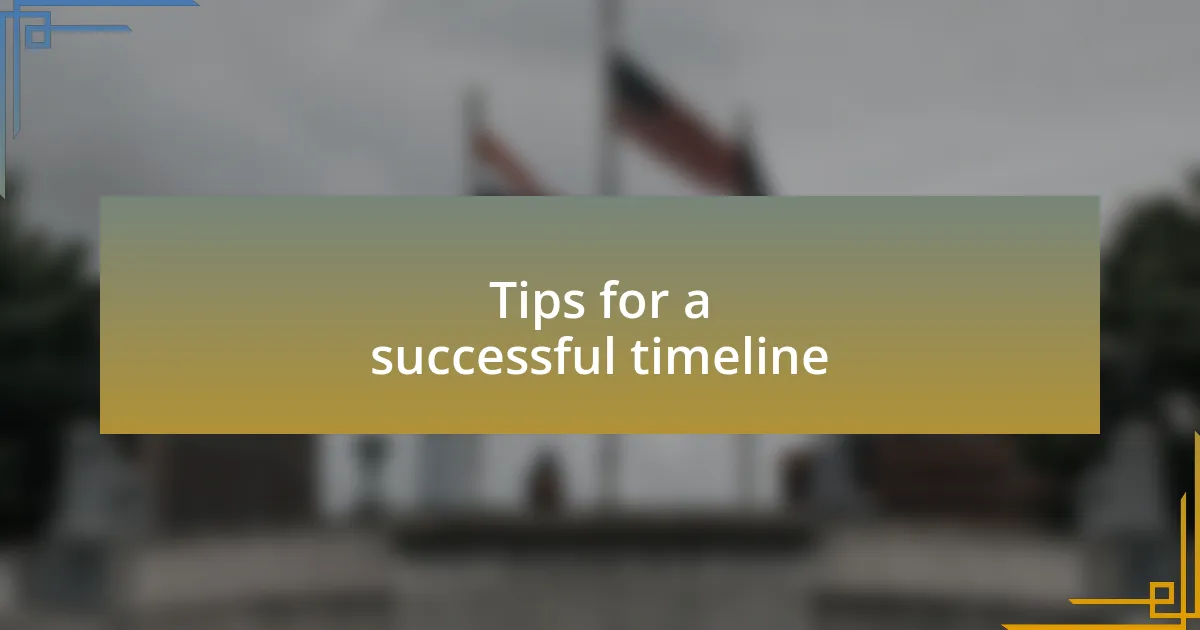
Tips for a successful timeline
When crafting a timeline, I learned the value of prioritizing essential elements first. For instance, when planning my wedding, I spent time identifying key moments that mattered most to us—like the first dance and speeches. How deliberate are you being in highlighting your must-have moments? Focusing on these pivotal events created a natural flow and ensured that our timeline felt both purposeful and meaningful.
Another insight that I found helpful was to involve key stakeholders in the timeline creation process. I remember hosting a casual coffee meeting with my bridal party to discuss expectations and roles throughout the day. It was enlightening to hear their perspectives, and including their input built a sense of teamwork. Have you considered how collaboration might ease the stress of planning a big day?
Lastly, adapting my timeline to account for the unexpected proved invaluable. As we went through the day, I realized that not everything would go as planned, like our outdoor ceremony being slightly delayed due to a sudden shower. Rather than being frustrated, I embraced the moment. How do you plan to react when things take an unexpected turn? Allowing my timeline to be flexible turned potential disruptions into cherished memories, demonstrating that the journey is often just as beautiful as the destination.